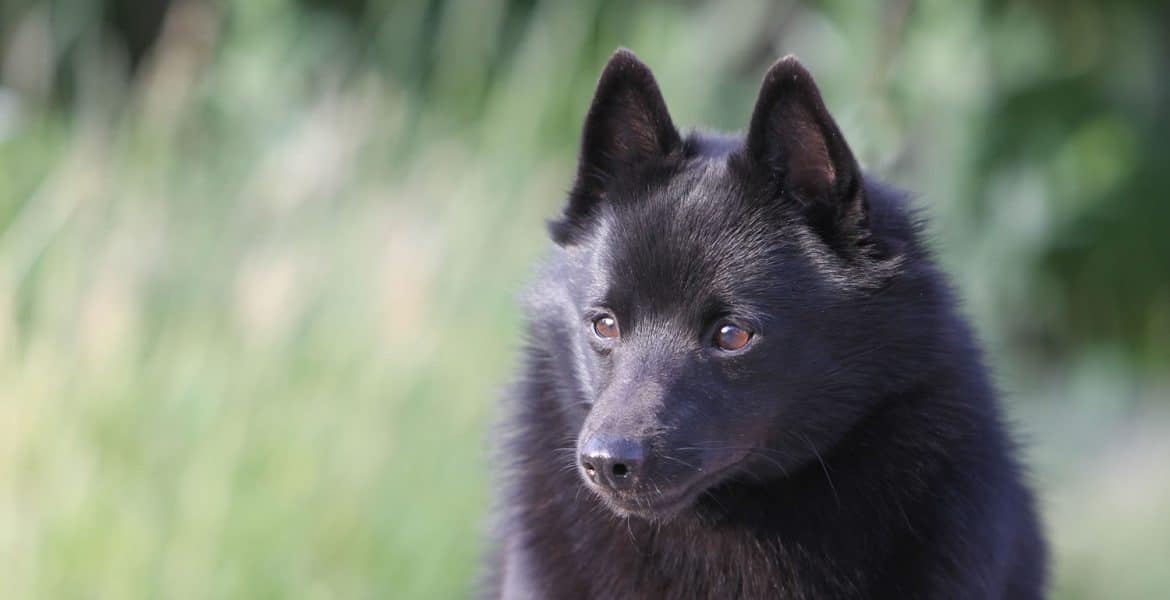 Schipperke (pronounced Skip-er-kee) is a small Belgian breed of dog that originated in the early 16th century. There has been a long ongoing debate over whether this type of dog is a spitz or miniature sheepdog.
Schipperke (pronounced Skip-er-kee) is a small Belgian breed of dog that originated in the early 16th century. There has been a long ongoing debate over whether this type of dog is a spitz or miniature sheepdog.
Schipperkes were formally recognized as a breed in the 1880s and their first standard was written in 1889. The breed name, which translated to English means “little skippers” or “little boatmen”, was coined because of the common practice of using the dogs to guard boats. Before the formal name, the common name was “Spitzke”. In World War II, the Belgian Resistance used the dogs to run messages between various resistance hideouts and cells and they were never discovered by the Nazis. To this day the breed is often found riding the decks of boats and ships and patrolling boat yards. You also see them on peoples sailboats and pleasure craft standing on deck with the wind blowing through their black mane.
Schipperkes are often described as looking fox like, with small, pointed ears that stand erect at the top of the head. They have a medium length, solid black double coat. A long ruff surrounds the neck and creates a stripe going to the rear. Schipperkes are sometimes born tail-less, but if present the tail is usually docked. They can weigh anything between 3 and 9 kilograms and are around 25 to 30 centimetres in height.
Schipperkes are generally very healthy dogs and although their life span is expected to be around 13 to 15 years they can live as long as 17 or 18 years. However, there is one genetic disease that Schipperkes are prone to, MPS IIIB. It affects 15% of the breed’s population. The onset of the disease is usually around 2 to 4 years and symptoms can include tremors, difficulty balancing and walking and a reddish cast to the coat. The disease is progressive and has no effective treatment or cure at present. Schipperkes who are carriers or affected by the disease should never be bred from. Epilepsy and Legg Calve Perthes Disease are also conditions that this breed may suffer from but are no way prevalent within the breed.
 Special grooming is not required, however they will lose their undercoat up to three times a year in a massive moult over a ten day period, they are said to “blow” their undercoats. This is more common in females than males. Many owners give their Schipperke a warm bath to remove the undercoat, preventing it from being strewn all over the house. Groomers will also provide this service. When a Schipperke blows their coat it can take around 2-3 months to grow back.
Special grooming is not required, however they will lose their undercoat up to three times a year in a massive moult over a ten day period, they are said to “blow” their undercoats. This is more common in females than males. Many owners give their Schipperke a warm bath to remove the undercoat, preventing it from being strewn all over the house. Groomers will also provide this service. When a Schipperke blows their coat it can take around 2-3 months to grow back.
These little foxes are very energetic, devoted and loyal to all family members including children. They bond closely to their master. Cats and other dogs are eagerly accepted. They are easily trained, however, if they are not given rules and boundaries, they will assume the role of pack leader. They need plenty of exercise and activity to burn off that excess energy. Schipperkes can be a tad slow or difficult to housebreak and will require patience.
Schipperkes love to howl and have a high pitch bark that will ring your ears! After their initial bark they need to be told to quieten down and if done consistently their barking can be controlled.
The Schipperke adapt well to apartment life. They are very active indoors and will spend hours chasing a ball or toy. They do well in a fenced yard, but can be very good at escaping. Consider getting a taller than normal fence for their size and bury chicken wire around the base of the fence to prevent them from digging under it. Make sure any fence or enclosure is tightly secured.



You have a lot of misinformtion and half truths on this breed listed.
I guess finding useful, reliable ifnormtiaon on the internet isn’t hopeless after all.